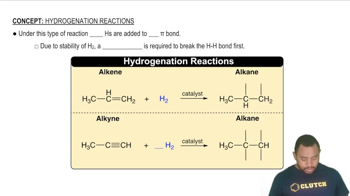Here are the essential concepts you must grasp in order to answer the question correctly.
Intermolecular Forces
Intermolecular forces are the attractive forces between molecules that influence physical properties such as boiling and melting points. They include hydrogen bonding, dipole-dipole interactions, and London dispersion forces. Understanding these forces is crucial for predicting how substances behave in different states and conditions.
Recommended video:
Intermolecular vs Intramolecular Forces
Hydrogen Bonding
Hydrogen bonding is a specific type of strong dipole-dipole interaction that occurs when hydrogen is covalently bonded to highly electronegative atoms like nitrogen, oxygen, or fluorine. In the case of HF (hydrogen fluoride), the hydrogen atom forms a hydrogen bond with the fluorine atom of another HF molecule, significantly affecting its properties, such as its high boiling point compared to other similar-sized molecules.
Recommended video:
Polarity
Polarity refers to the distribution of electrical charge over the atoms in a molecule. A polar molecule has a significant difference in electronegativity between its atoms, leading to a dipole moment. HF is a polar molecule due to the high electronegativity of fluorine compared to hydrogen, which results in strong intermolecular forces and influences its interactions with other molecules.
Recommended video:

 Verified step by step guidance
Verified step by step guidance


